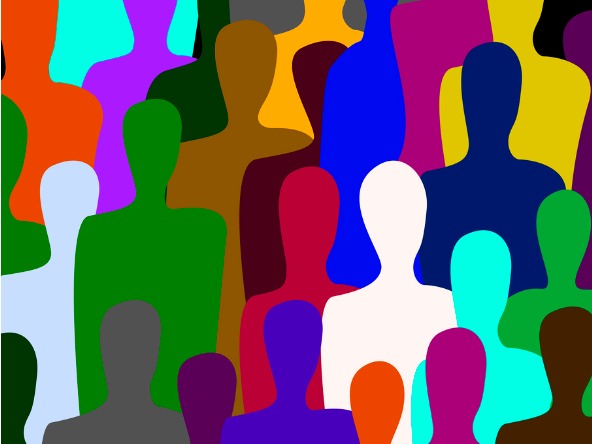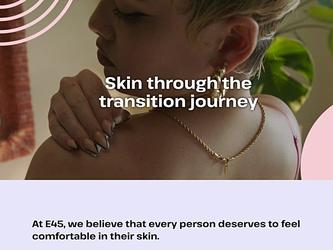Designing for diversity, equality and inclusion

Issues of DEI (diversity, equality and inclusivity) have rightly been dominant in market research in recent times. As with all industries and professions, there is a pressing need to bring improvement to the workplace.
But for many of us, there is a further focus, and one that’s more unique to our line of work: the opportunity we have to conduct research that explores DEI for our clients. Research that can go towards creating meaningful change in how brands communicate with, and shape products and services for, those who are marginalised or excluded.
To be in a place to make a difference like this is quite a privilege; something for the industry to be proud of. But equally, it is quite a responsibility. There is much that needs considering in how we design projects and how we set expectations with clients.
In the last 12 months, we’ve been exploring DEI for clients in contexts as diverse as dance music, dating apps, gaming, sports apparel, mobility and representation in media. We’re sure we’re not alone in this sudden uptick of DEI work – nor in starting to comprehend just how much complexity there is to navigate.
We certainly haven’t got everything right. And what’s written here comes from the perspective of ‘we’re learning’, not ‘we’re experts’. But these are some of our focal points when reviewing how we design and conduct research in DEI – and indeed, much of what’s covered here is important in ensuring inclusivity in all market research, not just that which has DEI in the title of the RFP (request for proposal).
Embrace the complexity
Intersectionality is a term that gets bandied around quite loosely, but acknowledging that many experience overlapping and interdependent forms of discrimination is key to how brands can make changes – be that to products and experiences, or campaigns and communications – beyond the superficial.
Gender, race, identity, disability, economic status – whichever dimensions you choose to consider, there will always be others. We cannot use this complexity as an excuse to dodge the issues, to say it’s too complicated. But it does have a profound impact on how we manage DEI projects, guide our clients and avoid box ticking exercises.
Who tells the stories
We must check our working practices to ensure that we are relaying narratives that are true and unvarnished. That, of course, means making sure we’re hearing from the right people. But also that we’re not filtering or distorting stories through only picking the aspects that make sense to us, or that correspond with our assumptions of what the challenges are.
We also need to be aware that we’re often placing a great deal of weight on a small number of participants to speak on behalf of whole communities. You could say these points are true in all market research, but the responsibility becomes paramount with DEI work.
The other side to who’s telling the stories is who’s asking the questions. And therefore consideration to if we, as a team, are best placed to relate to the lived experiences of others, or if we should call on outside expertise from those who can better identify with the discriminatory factors we’re exploring.
Method challenges
All research methods have flaws, but mitigating against them is a priority in DEI work. We’ve discussed story-gathering and interpretation above, but quantitative research throws up particular issues.
Quantitative research is intrinsically about putting people in boxes, which runs about as counter to acknowledging intersectionality as is possible. Tackling this means allowing people to give breadth of experience within their answers. For example, when understanding intersectional experiences, not asking participants to reflect on just one part of their identity, but on their lived experiences as a whole.
Another area where we have encountered issues is with recruitment screeners. Preparing these to adequately address factors ranging from identity to neurodiversity isn’t yet the norm in our industry. Special measures are required in their creation for DEI projects.
All links in the chain
Particularly when conducting multi-market projects, we need to know the DEI stance of suppliers and partner agencies before we can credibly introduce them as a contributor to our work. To not expect differences when working with partners around the world is ill-judged.
Careful briefing of partners runs alongside this. Local context needs to be laid out and appreciated upfront – including where it might sit counter to finding the common global story that clients are often seeking. Moreover, translation – from descriptive terms used to interpretation of very personal stories – needs attention.
Safeguarding
In DEI work, the need to safeguard both participants and our project team is crucial. Projects should be set up with procedures in place for what to do if triggering language or actions are encountered. We need to avoid anyone being left uncertain what they can do, or who they should speak to, if the work is causing them concern.
Clients are as much part of this as anyone. We hope to have an equitable relationship with our clients on all projects, but here it is vital that we can have frank conversations – and raise it loudly and confidently if we feel the work is putting people at harm.
What success looks like
Research is generally expected to provide tidy ‘answers’. Projects to reach agreed results. Clients make the call on if the work has been a success or not. But all of these basic principles of a buyer-seller relationship are put under pressure in the case of DEI work. Here, is success defined by the client or by those who are marginalised? Clients need to give away more power and license than they would normally expect to. Reciprocity between brand and those disempowered is essential.
All of this makes for a steep learning curve for our industry – and not to overlook, all of the refinement of project design won’t count for much unless we can bring greater diversity and inclusivity into our industry, too. But there’s also an incredible opportunity here, for us all to contribute to meaningful change. Let’s embrace it.
Andy Crysell is founder and chief executive officer at Crowd DNA.

We hope you enjoyed this article.
Research Live is published by MRS.
The Market Research Society (MRS) exists to promote and protect the research sector, showcasing how research delivers impact for businesses and government.
Members of MRS enjoy many benefits including tailoured policy guidance, discounts on training and conferences, and access to member-only content.
For example, there's an archive of winning case studies from over a decade of MRS Awards.
Find out more about the benefits of joining MRS here.




[crop:592x444+0+0;h:250;q:75;id:2913753].jpg)








0 Comments